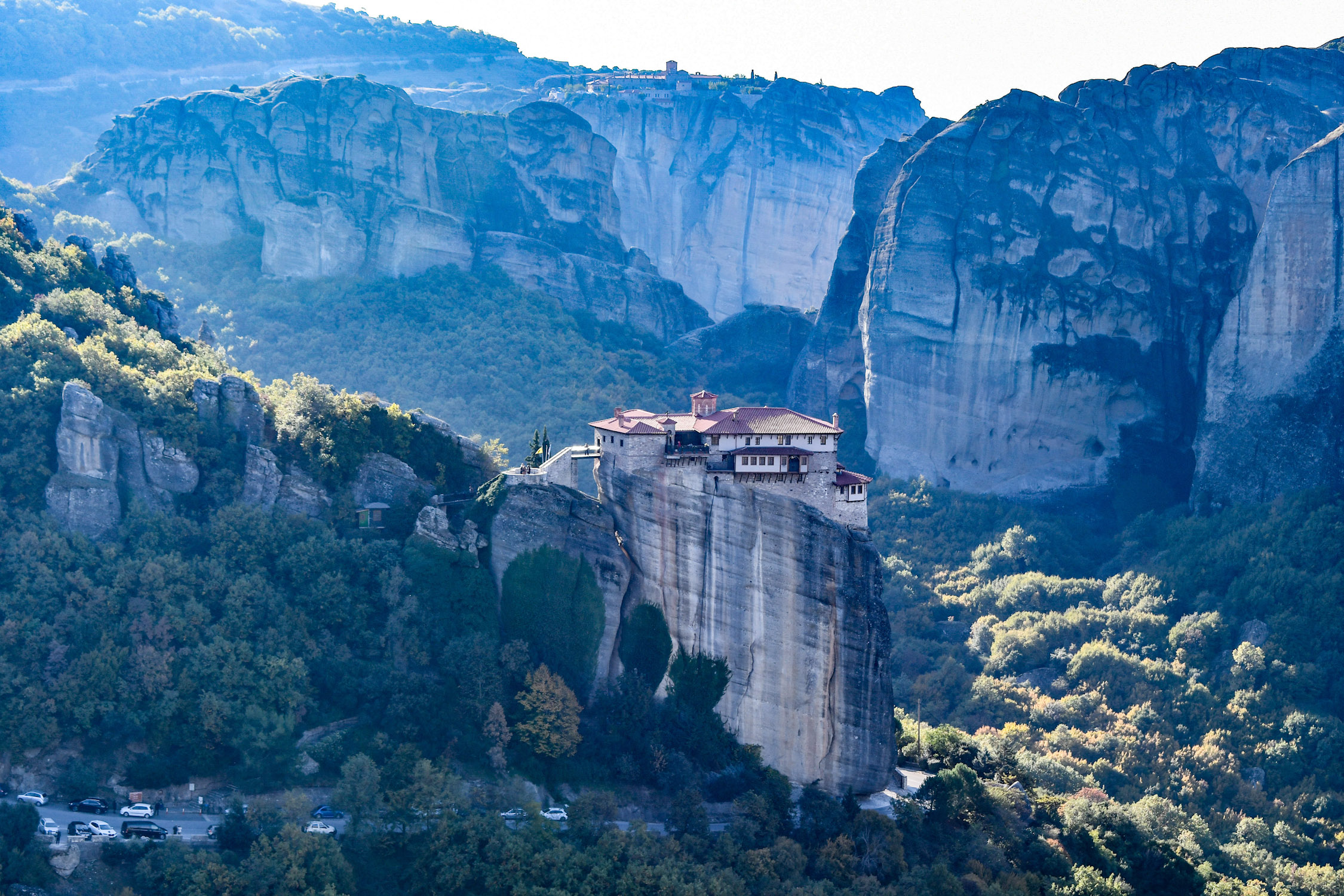
Millions of years ago, the area was a vast seabed, but over time, the waters receded, and what remained were towering sandstone pillars. The natural formations with their sharp edges and towering heights create a landscape of otherworldly beauty
The Meteora Monasteries, perched atop these immense rock formations in central Greece, are one of the most awe-inspiring and mysterious sites in the world. These towering pillars of stone, rising hundreds of feet into the air, seem almost otherworldly. The monasteries that crown them are not just architectural marvels; they represent a profound connection between nature, spirituality, and the history of Greece.


During the 11th century, the first monks, drawn by a desire for isolation and devotion, scaled the rocky pinnacles using nothing more than ropes and ladders. They sought to distance themselves from the temptations of the world below and to find a deeper connection with God. This they believed, would enable them to focus entirely on prayer and contemplation.
Early monasteries were built in the rock faces utilizing existing fissures and caverns. Later, the monasteries were built on top of the rocks and included churches, cells (monks apartments), as well as other features. The 17th and 18th centuries marked the height of Meteora’s monastic community. At its peak, there were 24 monasteries on the rocks. But as the centuries passed, many of the monasteries fell into decline. The Ottoman Empire’s rule over Greece, combined with the rise of secularism, led to the gradual abandonment of some of the monasteries. The monks who had once sought solitude found their numbers dwindling, and in time, the monasteries were left largely deserted
After vising Delphi earlier in the day, we arrived at the town of Kalampaka, where we had dinner and spent the night. It was a lovely little town consisting of a small square lined with small shops and restaurant and also serves as the main base for visitors to Meteora. Though it was dark when we arrived, we enjoyed our brief time there.


The following morning we began our journey up the steep winding roads to visit two monasteries, the Monastery of Varlaam and the Holy Monastery of Saint Stephen. Along the way we made a few photo stops to view several of the other monasteries as well.





We had the privilege of visiting two of these monasteries on our trip to Greece in November 2024. The first monastery we visited was the Holy Monastery of St. Varlaam. It was established by monks Varlaam and his companion around 1350. After a decline in the 18th century, it was revitalized in the 19th century. Today, it remains an important monastic site, known for its stunning architecture and frescoes church.
After visiting Varlaam, we then visited the Holy Monastery of Saint Stephen, founded was a holy hermit named Jeremiah in the late 1100’s. The Holy Antonios Kantakouzenos, oversaw construction of the current monastery in the 1500’s on the eastern face of the rock overlooking the town of Kalambaka. Like other Meteora monasteries, it declined during the 19th century due to external pressures and was abandoned for a time. It was restored in the 1960s and in 1961 became a nunnery. A sisterhood of nuns has lived there since then. Accessible by a bridge, it remains a popular tourist destination and is part of the UNESCO World Heritage site of Meteora.
Today, Meteora remains one of Greece’s most beloved and mysterious destinations, drawing pilgrims, tourists, and adventurers from around the world. The monasteries, perched in defiance of the landscape, still stand as symbols of faith, endurance, and dedication. The monks, though fewer in number, continue to live in the remaining monasteries, maintaining the ancient traditions and rituals that have persisted for centuries.
The Meteora rocks themselves, now protected as part of a national park, continue to awe visitors with their sheer majesty. The stone towers, with their swirling patterns and eerie shapes, are an unforgettable sight. Whether viewed from the valley floor or from a monastery perch high above, the landscape evokes a sense of timelessness, as if the world’s troubles and distractions are left far below.



























